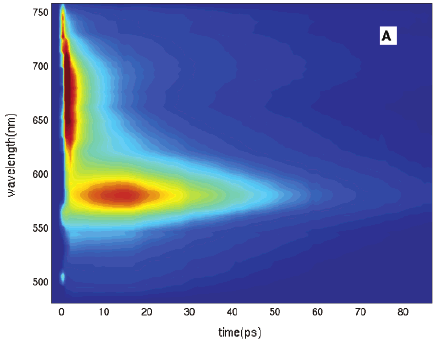-
Fluorescence Quenching in Electron-Donating Solvents. 2. Solvent Dependence and Product Dynamics
Ana Morandeira, Alexandre Fürstenberg, and Eric Vauthey
J. Phys. Chem. A 2004, 108(40), 8190-8200

The electron transfer quenching dynamics of excited perylene and cyanoperylene in various donating solvents has been investigated by using ultrafast fluorescence up-conversion and multiplex transient grating. The strongly nonexponential fluorescence decays have been analyzed by using the orientational model described in the first article of this series (J. Phys. Chem. A 2003, 107, 5375). It appears that the solvent dependence of the quenching dynamics is strongly connected to the number of surrounding donor molecules enabling ultrafast electron transfer. This number depends mainly on the driving force for electron transfer, on steric interactions, and on the occurrence of dipole−dipole interactions with the acceptor. The quenching product is an exciplex with a strong charge-transfer character. The complicated wavelength dependence of the fluorescence dynamics in the exciplex region, as well as the spectral dynamics observed in the transient grating data, is attributed to dipolar solvation, which leads to an increase of the charge-transfer character of the exciplex. The strong donor dependence of the exciplex lifetime is very similar to that reported earlier for the charge recombination time of geminate ion pairs in acetonitrile, and can be rationalized in terms of different intramolecular reorganization energies and electronic coupling constants.
DOI: 10.1021/jp048048c
Archive ouverte / Open archive: unige:3656
